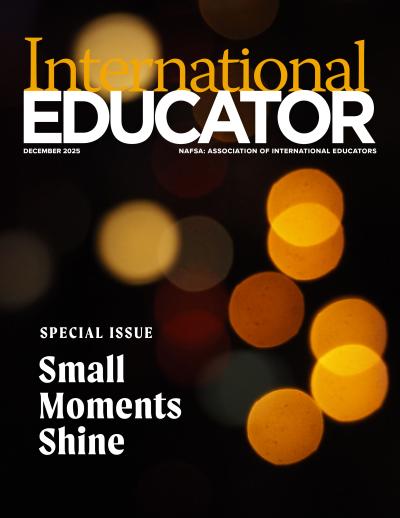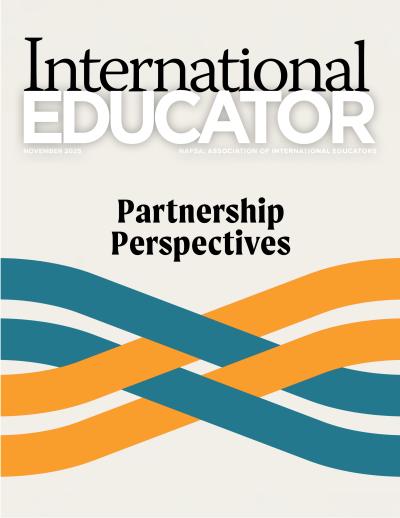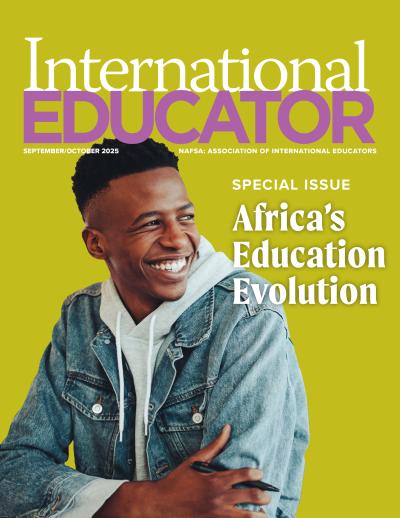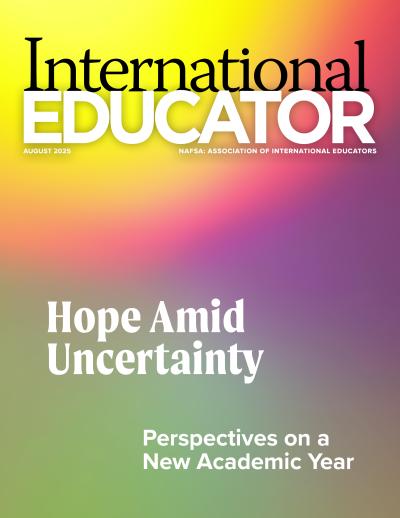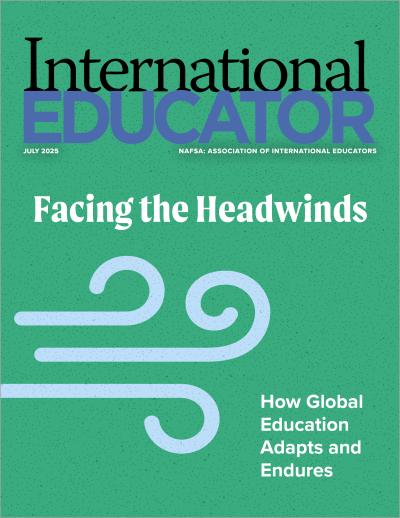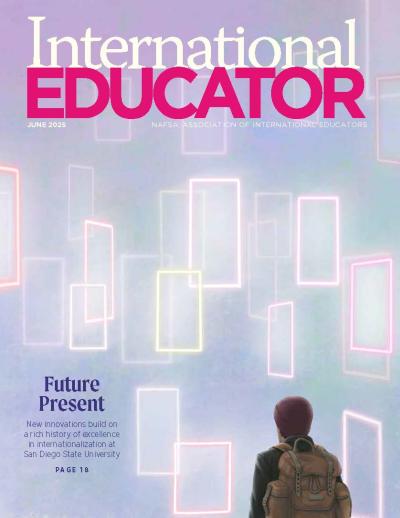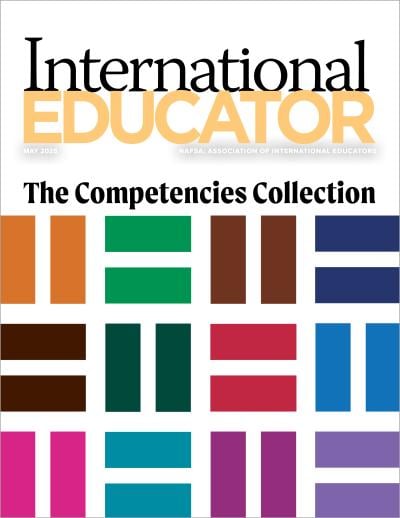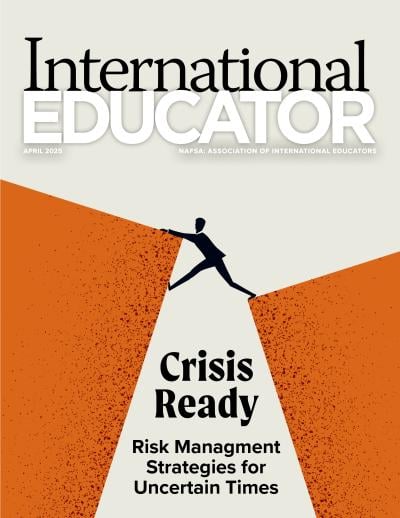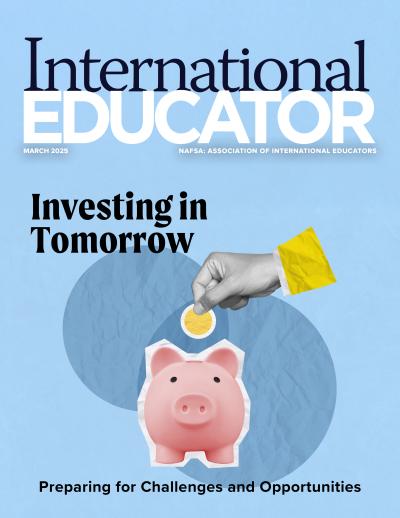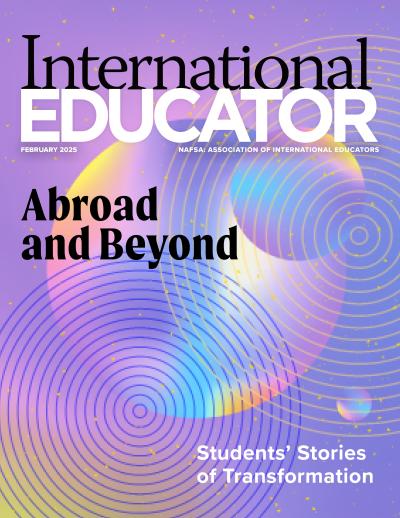The Pursuit of Knowledge

From the exchange of ideas between one scholar and another to complex projects involving multiple institutions, international research collaborations are an essential aspect of international education. These partnerships share goals of generating knowledge and advancing scientific discovery—and, unlike institution-driven partnerships, research partnerships are more individualized.
“Research partnerships are about individual researchers deciding to work together,” says Innes Ireland, deputy director of global engagement at the University of Technology Sydney. “The institution doesn’t need to be involved, and formal partnership documents aren’t always necessary.”
While every collaboration is different, José Celso Freire Junior, associate provost for international affairs at Universidade Estadual Paulista (UNESP) in São Paulo, Brazil, says successful international research partnerships include several foundational elements.
Clear objectives are essential in any partnership, as goals should match the research interests of the institutions involved; it’s also crucial to have realistic expectations about outcomes and each partner’s role, so flexibility is needed. Horizontal collaboration enables partners to work together, recognize strengths and weaknesses, and focus on areas where they can support one another. Transparent and effective communication (e.g., regular meetings to review progress and plan next steps) facilitates collaboration. Finally, says Freire Junior, partners should establish a method for measuring their work and providing constructive feedback, which encourages continuous improvement and alignment with project goals.
With these elements in place, institutions should prioritize several other critical factors for effective research partnerships: a shared sense of commitment, a foundation of mutual trust, well-defined expectations, and vibrant partnership networks.
Shared Values and Commitment
Natalie Cruz, associate director of global engagement at Emory University, emphasizes that a successful research partnership should begin with an honest conversation about goals, task ownership, and how to keep communication open when misunderstandings occur. “Everyone should approach the partnership with an open mind, shared values, and a flexible plan for achieving goals,” she says.
Cruz measures success through the quality of research—diversity of thought, publications, and outputs—and, most importantly, by the relationships developed. One successful partnership involved a long-term study of students who attended international schools. Cruz explains that the partnership began by working with an international organization to connect with schools worldwide, where the team had to understand schools’ cultural nuances and time frames.
“Everyone should approach the partnership with an open mind, shared values, and a flexible plan for achieving goals.” —Natalie Cruz
“Within the research team, which includes members from all over the world, we’ve built relationships and learned about each other’s strengths, especially considering our different cultural backgrounds,” Cruz says.
A strong commitment to working together is essential too. Challenges like distance, time zones, competing priorities, and varying academic schedules across countries can make collaboration difficult. “The key is having a commitment strong enough to overcome these challenges,” says Ireland. “Another important factor is having a realistic plan: What do you want to achieve, and how will you do it? Who will handle each part of the collaboration? Is institutional support needed, and will it be available?”
A Foundation of Mutual Trust and Respect
Freire Junior notes that successful collaboration starts with building a relationship based on trust and respect, which takes time and regular interaction. “Research relationships can thrive when there is respect for differences, as this helps [partners] value diverse perspectives and honors each person’s unique background and experience,” he explains.
Partners need to be selected carefully. Since the goal of these partnerships is to produce knowledge, it’s crucial to select institutions and researchers with a solid reputation and expertise in the research area, as well as shared values and ethical standards.
Freire Junior points to the Global Bioeconomy Alliance—an international research collaboration formed by UNESP, the Technical University of Munich, and the University of Queensland—as a fruitful partnership. The alliance has achieved significant successes, including facilitating access to research funding from agencies in all three partner countries.
“What started as a collaboration between researchers from three universities has grown and continues to bring benefits,” Freire Junior says.
Detailed Planning and Defined Expectations
Kiki Caruson, vice president of USF World at the University of South Florida (USF), notes that participants’ expectations should be clearly communicated before work begins. “Taking time to create a detailed plan for reaching the research goals, with input from everyone involved, will help prevent unexpected issues that could jeopardize the team’s relationship or the project’s success,” she says.
Caruson says one of the most successful institutional research programs she has been involved in is USF’s Ghana Scholars Program, which has been recognized for its innovation in international partnerships by the Institute of International Education. Supported by the Carnegie Corporation, the program invites Ghanaian faculty to USF for between three and six months as visiting scholars who engage in research collaborations, attend professional development workshops, and experience the culture of a leading research university.
“I consider the program a success because of its depth, breadth, and longevity. The relationships formed between the early cohorts of visiting scholars and USF faculty have continued to grow.” —Kiki Caruson
Over its 15-year history, the program has hosted more than 50 scholars from Ghana, resulting in numerous coauthored publications and joint research activities. The collaboration recently expanded to include Kwame Nkrumah University of Science and Technology in Kumasi—which partners with the USF Colleges of Engineering, Education, and Global Sustainability (with funding from the National Science Foundation)—to conduct water sanitation and hygiene research in Ghana.
“I consider the program a success because of its depth, breadth, and longevity,” says Caruson. “The relationships formed between the early cohorts of visiting scholars and USF faculty have continued to grow, and the range of disciplines involved in research collaborations has expanded significantly. These now include fields like business, medicine, public health, behavioral sciences, the humanities, art and music, and both social and natural sciences.”
Healthy Partnership Networks
At San Diego State University (SDSU), research partnerships focus on building strong international relationships. Earlier this year, SDSU achieved Carnegie’s elite R1 status for research activity, ranking among the top 5 percent of U.S. universities. SDSU also received the 2025 Senator Paul Simon Award for Comprehensive Internationalization from NAFSA.
“This dual recognition highlights how SDSU integrates research and internationalization to benefit our students, faculty, and partners,” says Cristina Alfaro, associate vice president for international affairs at SDSU. “At the heart of our international education, leadership, and impact efforts is our approach, which begins by building trusting relationships and networks with partners worldwide.”
SDSU faculty collaborate on research worldwide, with significant partnerships in Mexico. Notable projects include cross-border research on pollution in the Tijuana River Estuary and collaborations on public health, sustainable development, education, and public policy with institutions like Universidad Autónoma de Baja California. In 2022, SDSU opened the Oaxaca Center for Mesoamerican Studies, which focuses on research in anthropology, public health, Indigenous language, and education, with partners including La Salle University. Other efforts include SDSU Georgia, a collaboration with local universities to offer STEM degrees in the Republic of Georgia, and a partnership in Palau to offer bachelor’s and master’s degree opportunities to the island nation’s educators.
“These initiatives…highlight how both internationalization and research—whether intertwined or separate—contribute to SDSU’s mission of preparing graduates to thrive in a global workforce,” says Alfaro.
Adaptability Is Key
While structure and guidelines are crucial for partnerships to thrive, it’s equally important to keep a flexible mindset. “Adaptability is key in the dynamic landscape of global research,” Caruson notes. “Given the constantly evolving geopolitical, financial, technical, and social environments, being open to change and flexible in your approach helps international research teams navigate challenges and seize emerging opportunities.” •
Tips for Success
The University of South Florida’s Caruson offers best practices for successful international research collaborations.
- Maintain consistent communication, both within the university and with international partners, and build trust networks.
- Cultivate the ability to adapt policies and practices across borders.
- Engage in equitable resource sharing since access to resources and capacity levels can vary widely across countries, regions, and institutions.
- Be mindful of differing levels of knowledge regarding research management.
- Take on a mentor role in collaborations with less-experienced partners.
- Develop cultural awareness to understand how partners manage research portfolios and partnerships.
- Be aware of the level of government regulation or control in the country where the research will take place.
- Discuss financial accountability early, including a written agreement outlining expectations and organizational roles. Be mindful of different attitudes toward fund management.
- Commit to regular visits and exchanges of personnel, and use technology to stay connected when travel isn’t possible.
- Create a recovery plan for addressing potential difficulties as you start the project.
About International Educator
International Educator is NAFSA’s flagship publication and has been published continually since 1990. As a record of the association and the field of international education, IE includes articles on a variety of topics, trends, and issues facing NAFSA members and their work.
From in-depth features to interviews with thought leaders and columns tailored to NAFSA’s knowledge communities, IE provides must-read context and analysis to those working around the globe to advance international education and exchange.
About NAFSA
NAFSA: Association of International Educators is the world's largest nonprofit association dedicated to international education and exchange. NAFSA serves the needs of more than 10,000 members and international educators worldwide at more than 3,500 institutions, in over 150 countries.
NAFSA membership provides you with unmatched access to best-in-class programs, critical updates, and resources to professionalize your practice. Members gain unrivaled opportunities to partner with experienced international education leaders.





